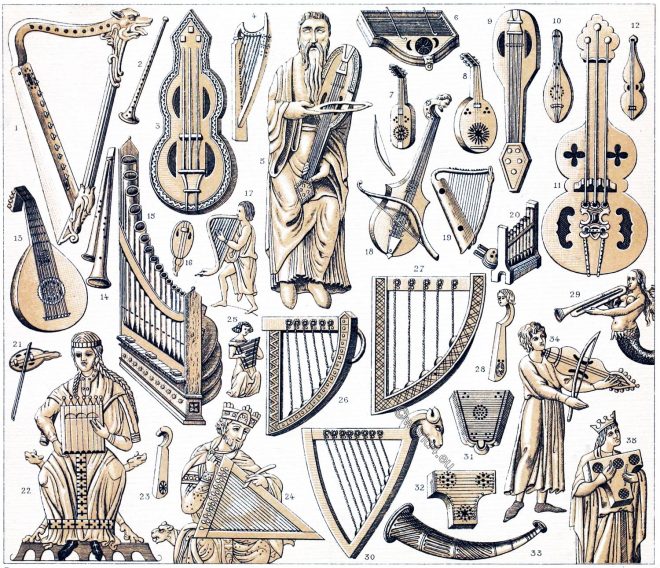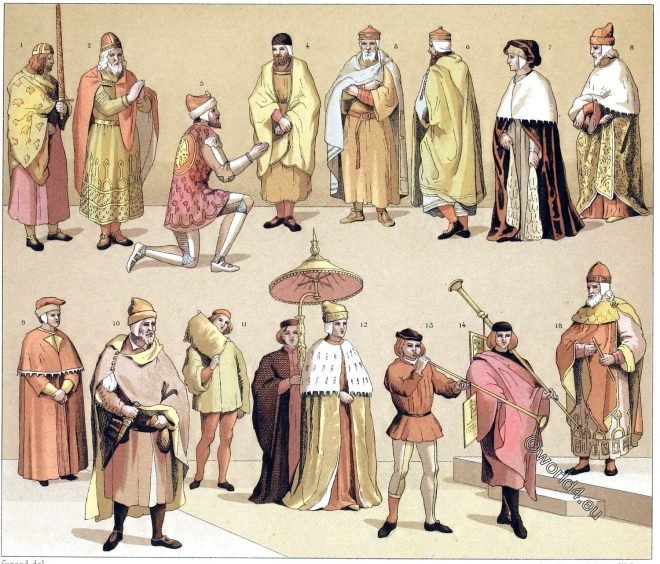Crowns and scepters of the Merovingian and Carolingian Frankish kings in the Middle Ages.
Category: 12th Century
Middle ages costumes in 12th Century
Musical instruments of the Middle Ages from the 12th to the 16th century.
Medieval musical instruments. Stringed instruments. The harp, the psaltery, the rota, the lute, the mandora, the guitar, the zither and the citole.
The Doge of Venice from the 9th to the 16th century. Officials.
The Doge of Venice from the 9th to the 16th century. State regalia. Officials. Jewish merchant of the 14th century.
The armorial bearings of the Monarchs of The Royal House of Normandy.
The Royal House of Normandy. Regal heraldry; the armorial insignia of the Kings and Queens of England. William I, William II, Henry I, Stephen. Queen, Matilda
England Anglo-Norman fashion history, 1087-1100.
Fashion and costume history in the Reign of William II, called William Rufus. Medieval England Anglo-Norman 1087-1100.
War costumes in the Middle Ages. Flags, banners, standards.
War costumes of the Middle ages. France 12th, 13th and 14th centuries. Weapons from the 12th to 15th centuries. Armor, weapons, flags, banners, standards.
Costumes of the spiritual orders. 10th to 18th century.
Monastic habit of spiritual orders from Poland, Germany and Flanders from the 10th to the 18th century.
ICONS. THE VLADIMIR MADONNA.
Note on the Vladimir Madonna, Vladimirskaya.- Note on the St Alexis Icon. By Robert Steele, Leonard Wharton.
Painted glass. Gilbert de Clare, 5th Earl of Gloucester
Gilbert de Clare, Earl of Gloucester of the name, was one of the principal barons who took up arms against King John. The royal line of the Plantagenets.
English kings Henry I and King John. 12th century costumes.
English kings Henry I and King John. IN one of the Cottonian manuscripts (Julius, E. IV.), a brief metrical chronicle of the kings of England, which has been attributed to… Read More









